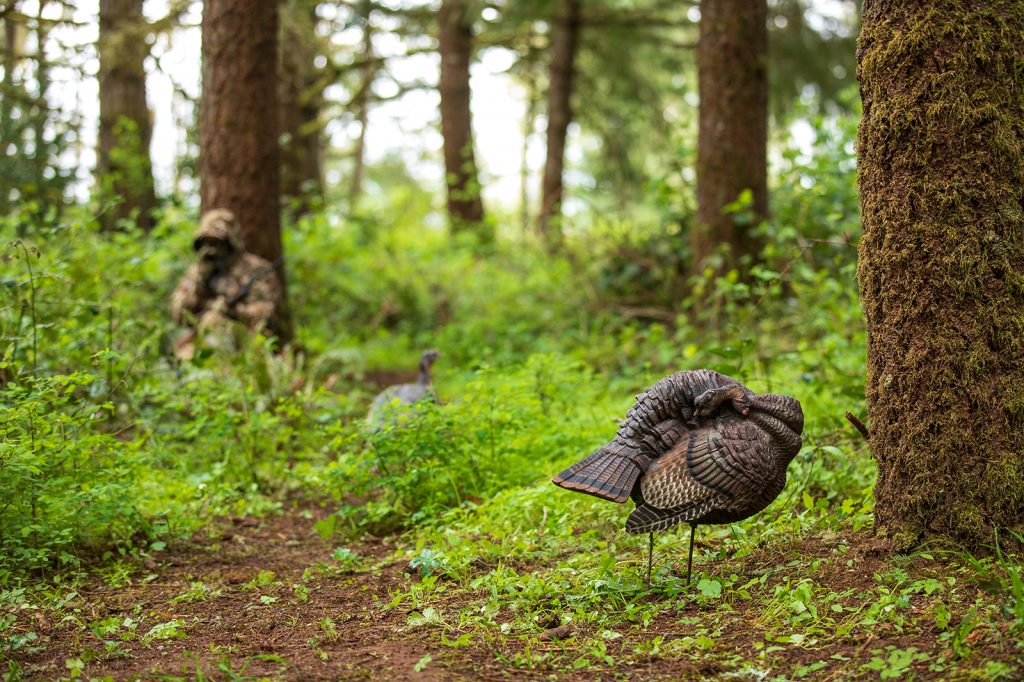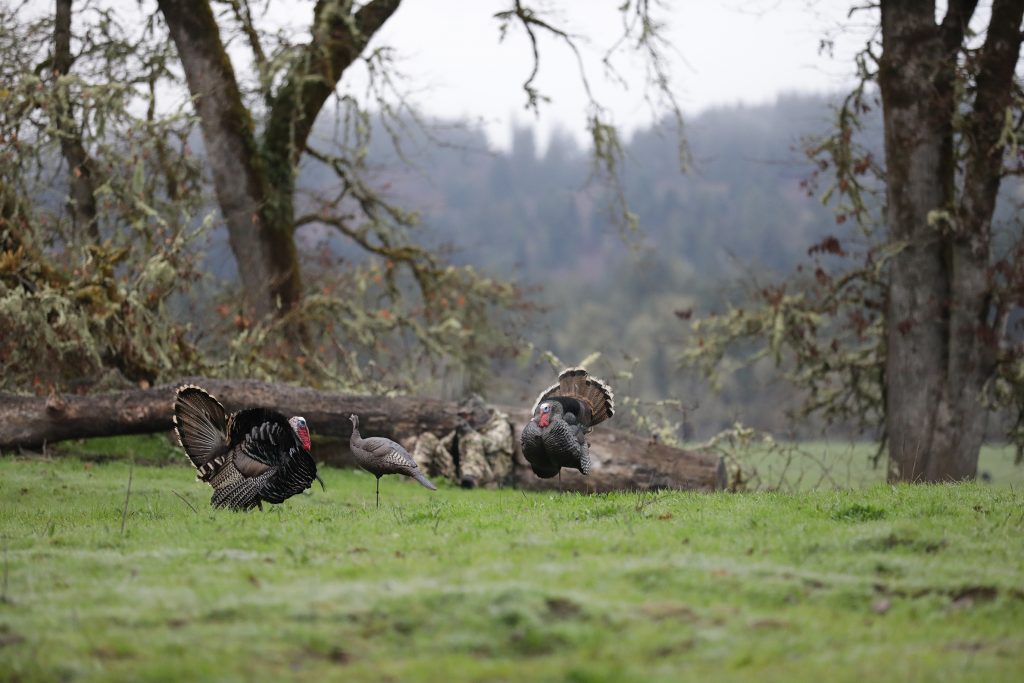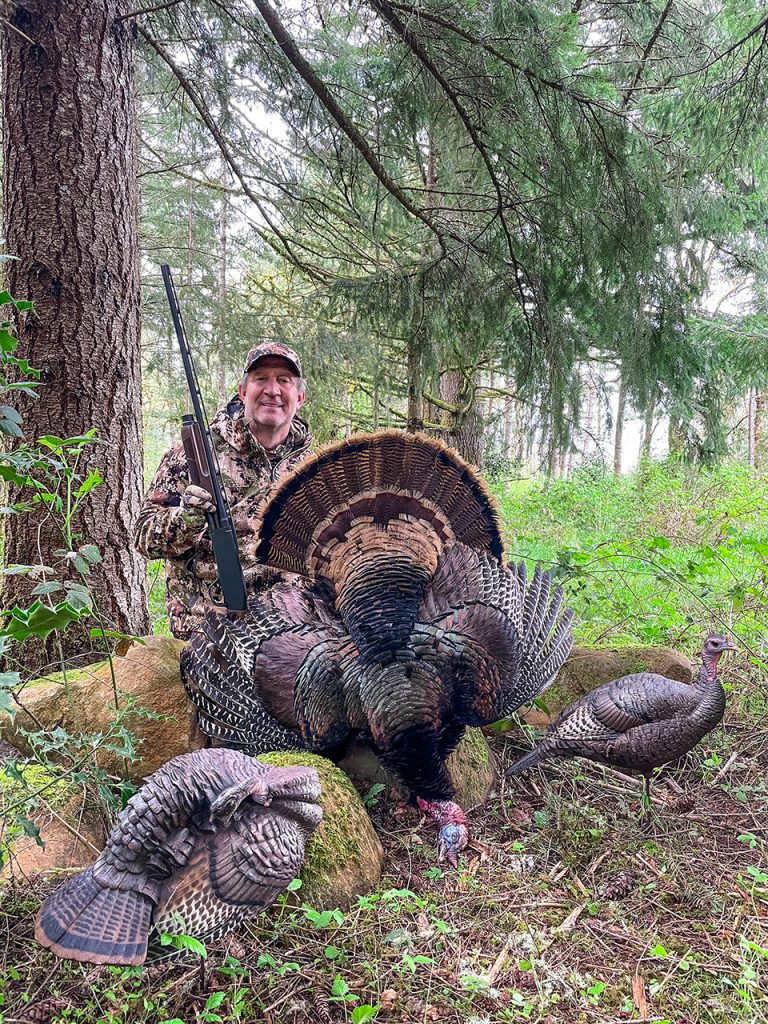How Turkey Decoys Can Affect the Shot
Had I not witnessed it myself, I wouldn’t have believed it when my buddy’s broadhead bounced off the shoulder of a strutting tom.
It was the same bow, arrow and broadhead he used to kill a bear one week prior. And he was shooting the same poundage.
The tom was jolted but took off running, every feather in place. We were dumbfounded. The incident reconfirmed the importance of knowing a tom’s body position in relationship to the vitals for proper shot placement.

It’s also imperative knowing how to situate the right decoy to get the shot you want. My preferred shot with a bow is when a tom faces straight away. Ideally, it’s alert, standing upright, exposing the spine and lungs. A strutting, facing away shot also yields perfect success if the shot is true. To get a tom with its back to me, I set one upright hen decoy facing my popup blind, no more than 10 yards away. Turkeys have exceptional vision but their depth perception is poor, which explains why they’ll approach so closely to a blind. I want a close shot with a bow and this setup provides it. When the tom steps in front of the decoy, a facing away shot is presented.
When turkey hunting with a 12 or 20 gauge, the load needs time to expand. If hunting with small sub-gauges, the target should be closer because these patterns open more quickly. Patterning your shotgun on a turkey target is critical so you know exactly how it hits. I like patterning every load at 10, 20 and 30 yards; 40 if using a 12 gauge.

If shooting a .410, I want the bird inside 20 yards. TSS loads perform at longer distances but if I’m not confident I can get a tom in close on a particular hunt, I’m stepping up to a 20 or 12 gauge with more pellets and killing power.
To get a tom inside 20 yards I like a single hen decoy that’s standing upright, walking or preening. I want an approaching tom to focus on one hen, not a hen and a strutting tom decoy it has to intimidate and likely fight. The more still a tom’s head when shooting light payloads, the greater the odds of a clean kill, thus a single hen decoy. I like positioning the hen decoy broadside to where I’m sitting, but away from where I anticipate an approaching tom to come from. This creates the illusion the hen is moving away, making the tom hurry to get in front of it. When in front, the tom often breaks into a strut. Once broadside and its head is separated from the body, shoot.
If conditions are wet and cold early in the season, I like using a Dave Smith mating hen decoy. I’ve noticed breeding periods extend during harsh springs. But no matter how wet or cold it is, lengthening photoperiods (the period of time in a day that an organism is exposed to light) boost testosterone levels in toms, and when they see a hen ready to breed, they’ll often move in.
When predator numbers are high or hens have lost broods due to bad weather, the mating hen decoy can be effective all season long. Late in the spring, hens will often re-breed, and toms are ready. Shots routinely come while the tom is mounting the decoy, making this a great sub-gauge option.

In areas with high tom-to-hen ratios, I like adding a strutting tom to a hen decoy. When seen from a distance, a strutting tom decoy will often bring toms on the run. I’ll place the strutter decoy broadside, either behind a hen decoy to make it look like it’s catching up to it, or in front of it to make it look like the tom is showing off. Give a 3-yard gap between the decoys as the approaching tom usually tries getting in front of the strutter to establish dominance.
If tom-to-hen ratios are low, I like using a strutting jake decoy. The jake strutter is less threatening and encourages leery toms to come close.
Should wet conditions prevail, try a mating hen decoy. Hens spend a lot of time preening before hopping back on their nest and usually do so under cover which means you can set up for a close shot.
By knowing your effective shooting range, how turkeys are behaving, their anatomy, and what messages decoys send, you’ll be in a position to bring toms right where you want them. But be warned, once you think you have these birds figured out, they might throw you a curve ball, which is what makes hunting them so addicting.
Note: For signed copies of Scott Haugen’s popular book, Western Turkey Hunting: Strategies For All Levels, visit www.scotthaugen.com.
